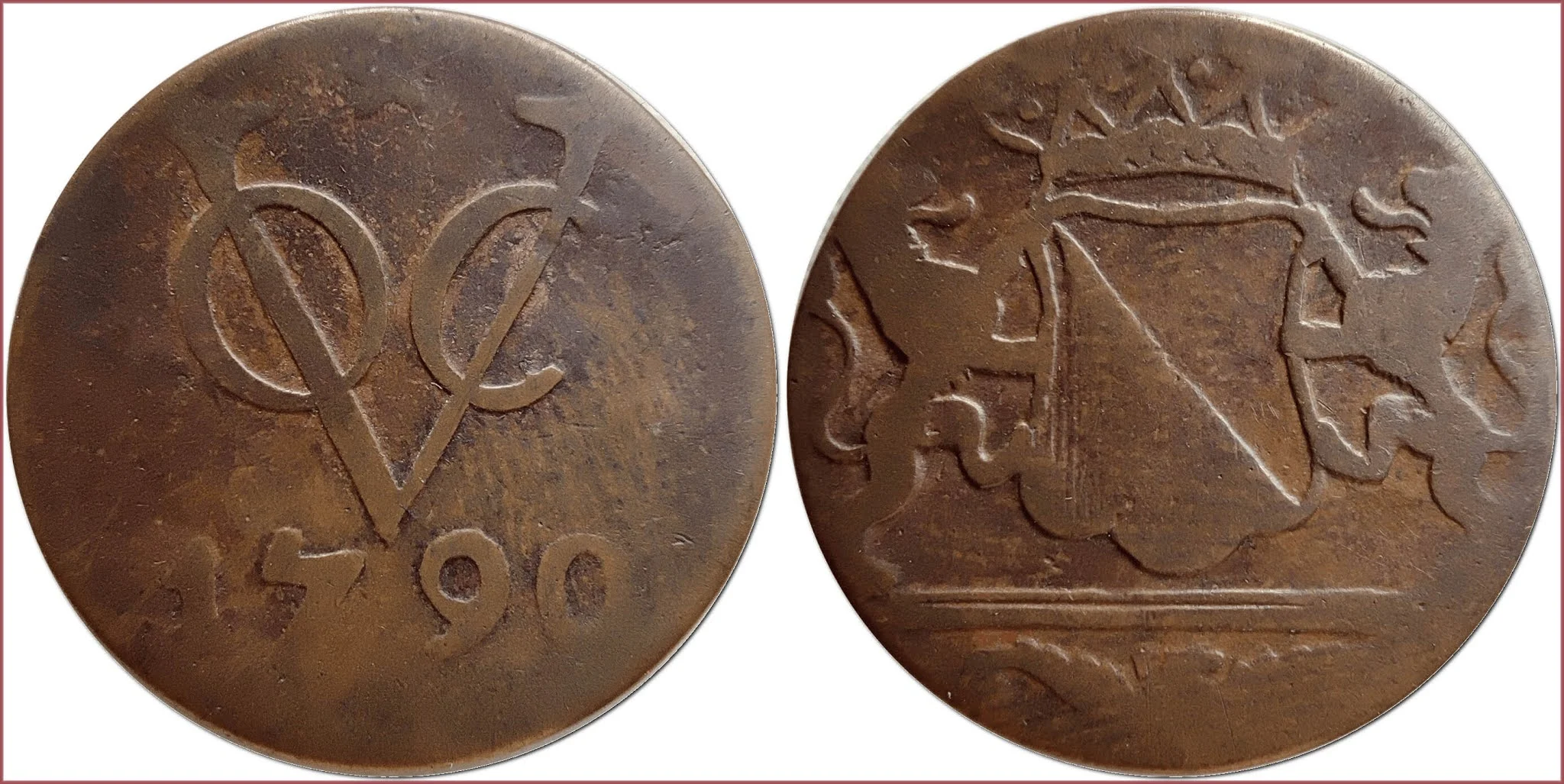DUIT: COIN OF THE UNITED EAST INDIA COMPANY
1 duit, 1790: United East India Company (VOC)
United East India Company (Dutch: "Vereenigde Oostindische Compagnie" /VOC/) — a megacorporation founded by a unification of several rival Dutch trading companies in the early 17th century. It is believed to be the largest company to ever have existed in history. In 1800 from the nationalised colonies of the VOC was formed Netherlands East-Indies (Dutch East Indies) — a Dutch colony (nowadays Indonesia).
VOC monogram between mint mark (Star) and date.
Utrecht coat of arms with lion supporters (interesting: during the Middle Ages, Utrecht was defended by two security units, each of which had its own triangular pennant and the appropriate color (red / white); it is this fact that is reflected in the coat of arms of Utrecht).
Utrecht mint.
- Copper: 21 mm - 2.92 g
- Reference price: 3.3$
COIN DUIT — WHERE & WHEN (coins catalog: by names & emitents)
- UNITED EAST INDIA COMPANY (18th century): duit = 1/8 stuiver = 1/160 gulden
- DUTCH REPUBLIC /REPUBLIC OF THE SEVEN UNITED NETHERLANDS/ (16th-18th centuries): duit = 1/8 stuiver = 1/160 gulden
- NETHERLANDS EAST INDIES (19th century): duit = 1/96 gulden
- SPANISH NETHERLANDS (16th-17th centuries): duit = 1/160 gulden
- BRITISH EAST INDIA COMPANY /JAVA/ (1811-1814): duit = 1/120 rupee
- MALAY PENINSULA /MALUKA/ (19th century)
- DUTCH INDIA (17th century): duit = 1/80 rupee
- DUTCH CEYLON (18th century): duit = 1/8 stuiver
- SURINAME /KINGDOM OF THE NETHERLANDS/ (17th-18th centuries): duit = 1/160 gulden
- GERMAN STATES /BENTHEIM-STEINFURT + BRANDENBURG-PRUSSIA + KLEVE/ (17th-18th centuries): duit = 1/480 thaler
The name of the coin duit comes from the Old Norse word "thveiti", which was used to denote small coins (literally "cut a piece"). Interestingly, as coin was widespread throughout the Malay archipelago, the word duit eventually was absorbed into Malay vocabulary becoming a slang word for "money", "copper coins". Besides, the duit is also referred to as the "New York penny" due to its use as a Colonial monetary unit in Dutch New Amsterdam (later New York).











